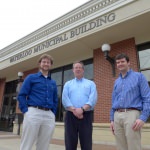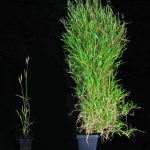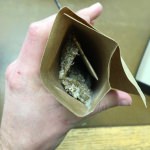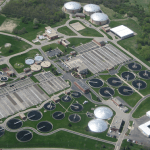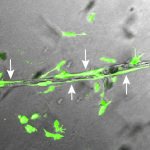Category Science & Technology
Directory of resources for researchers now available
“This is the first centralized, publicly searchable directory of shared research resources, services and cores at UW–Madison,” explains Marsha Mailick, vice chancellor for research and graduate education.
Students unveil second version of BadgerLoop pod
A team of students revealed their in-progress design for the BadgerLoop Pod II during an event held for media, sponsors and supporters at the UW–Madison Mechanical Engineering Building lobby.
Class analysis gives initial green light to green energy in Waterloo
A “capstone class” taught at the Wisconsin Energy Institute is helping the Wisconsin city of Waterloo evaluate whether it could generate all its electricity from renewable sources on city-owned land.
New course will teach students how to fly drones, collect data
This summer, the UW–Madison College of Engineering added a new way for students to navigate the skies: a course on drones.
Like valium for fish? UW–Madison discovery aims to solve stress in fish farms
A University of Wisconsin–Madison group that discovered a way to improve survival in fish farms has begun to unravel the mechanism behind their unexpected finding.
Finding useful chemicals from fungi, faster
Fungi are rich sources of natural molecules for drug discovery, but many challenges have pushed pharmaceutical companies away from tapping into this bounty. Now scientists…
Machine learning can detect a genetic disorder from speech recordings
Researchers accurately identified individuals with a genetic condition known as fragile X premutation, linked to neurodegenerative disorders, infertility or having a child with fragile X syndrome.
Five finalists in Governor’s Business Plan Contest have UW–Madison ties
Five of the 13 finalists in the 2017 Governor’s Business Plan Contest have roots at UW–Madison. A business that makes an assist device to orient firefighters in smoky fire scenes won.
Celestial boondocks: Study supports the idea that we live in a void
An undergraduate's work confirms we live in a hole in the cosmos, and sheds light on how we measure the rate at which the universe is expanding.
WARF and UW–Madison ranked sixth among universities in U.S. utility patents in 2016
The Wisconsin Alumni Research Foundation (WARF), which serves as the designated patent management organization for the University of Wisconsin–Madison, moved up to sixth place among the Top 100 Worldwide Universities which were granted U.S. utility patents in 2016.
Rediscovered mosses document changing Wisconsin landscape
The Wisconsin State Herbarium at the University of Wisconsin–Madison has discovered a collection of more than 2,000 mosses from the turn of the 20th century, lost to time in a cabinet inside Birge Hall, where the herbarium is housed.
$1M grant to boost engineering education at College of Menominee Nation
A $1 million grant will help the College of Menominee Nation and UW–Madison enhance their collaboration and ultimately educate more Native students in STEM disciplines.
Stem cells yield nature’s blueprint for body’s vasculature
A team led by Igor Slukvin, a University of Wisconsin–Madison professor, describes the developmental pathway that gives rise to the different types of cells that make up human vasculature.
30-year collaboration earns UW climatologist China’s top science honor
University of Wisconsin–Madison climatologist John Kutzbach has been awarded China’s highest scientific honor for foreigners in recognition of 30 years of collaboration that has advanced both American and Chinese climate science.




